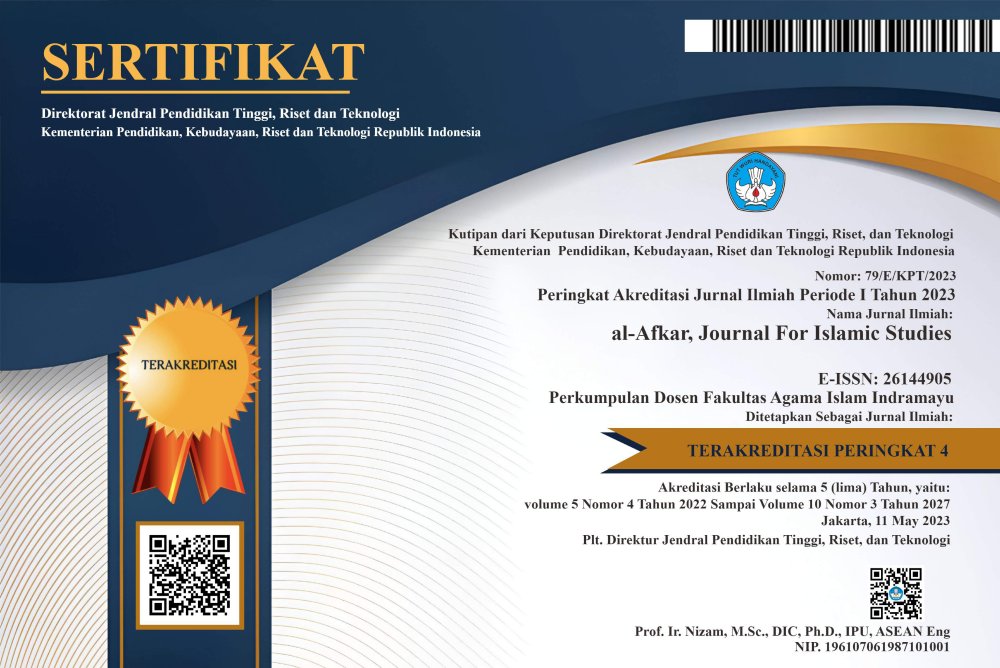Historical Analysis of the Islamic Fiscal Policies of Fatimid Egypt, Mamalik, Safavid Persia, and Mughol India
DOI:
https://doi.org/10.31943/afkarjournal.v7i2.1170Keywords:
Fiscal Policy of the Fatimid, Mamaalik, Syafawi, Mughol MonarchiesAbstract
The history of fiscal policy in Islam during the Fatimid and Mamaalik periods in Egypt, the Syafawiyah in Persia, and the Mughals in India, can be divided into two main phases: the glory phase and the decline phase. In the glory phase, historical records show that fiscal management under the governments of these caliphates generated revenue surpluses. This situation contributes to the country's economic stability and security. The Fatimids, Mamaaliks, Syafawiyahs, and Mughols in India implemented fiscal policies that encouraged increasing state income from diverse sectors such as agriculture, trade, and industry. The state's largest sources of income come from taxes, tīmār, muḳāṭa'a, waqf and ghanimah. High income is used to support the country's progress through financing territorial expansion, infrastructure development, education and health. However, during the decline phase, the Fathimiyah, Mamaalik, Syafawiyah and Mughol experienced budget deficits. Decreasing state income, failure to westernize the economy, high war costs, and high state debt are factors causing deficits in their fiscal policy.
Downloads
References
Ahmad, Z. A. (1979). Sejarah Islam dan Ummatnya. Jakarta: Bulan Bintang.
Amin, A. (1936). Duha al-Islam (The Morning of Islam). Cairo: Lajnat al-Ta’lif wa al-Tarjama wa al- Nashr.
Ahmed, A. S. (2003). Rekonstruksi Sejarah Islam: Di Tengah Pluralitas Agama dan Peradaban (A. Nst, trans.). Yogyakarta: Fajar Pustaka Baru.
Amin, S. M. (2015). Sejarah Peradaban Islam. Amzah.
As-Sirjani, R. (2011). Sumbangan Peradaban Islam pada Dunia. Jakarta: Pustaka Al Kautsar. Esposito, J. L. (2004). The Islamic World: Abbasid caliphate-Historians (Vol. 1). Oxford University Press.
Adonis. 2009. As- Sabit wa al-Mutahawwil: Bahs} fi al-Ibda’ wa al-Itba inda al-Arab (Arkeologi Sejarah Pemikiran Arab). Translated by Khoirun Nahdiyyin. Yogyakarta: LkiS.
Bosworth, C.E. 1993. The Islamic Dinasties, Cet I. Terjemahan oleh Ilyas Hasan. Bandung: Mizan.
BriU's, EJ. 1987. First Encyclopaedia of Islam. Vol. V. New York: T.p.
Bayat, Asef. 2001. Pos Islamisme. Yogyakarta: LkiS.
Esposito, John L. 2002. Ensiklopedi Oxford Dunia Islam Modern. Bandung: Mizan.
Fahruddin, Fuad Moh. 1985. Perkembangan Kebudayaan Islam. Cetakan I. Jakarta: Bulan Bintang.
Goitein, S.D. 1968. Studies in Islamic History and Institution. Leiden: EJ. Brill.
Grunebaum, G.E. Von. 1970. Classical Islam a History. Cetakan I. London: George Alien & Unwim.
Hamka. (1975). Sejarah Ummat Islam III. Jakarta: Bulan Bintang.Hasyim, A. (1975). Sejarah Kebudayaan Islam. Jakarta: Bulan Bintang.
Hassan, Ibrahim. 1989. Islamic History and Culture, Djahdan Humam (Penj.), Sejarah dan Kebudayaan Islam. Cetakan I. Yogyakarta:Kota Kembang.
Hasan, H. I. (1958). Tarikh al-Daulah al-Fatimiyyah Fi al-Magrib, wa Misr, wa Suriyah wa Bilad al- Arab. Cairo: Kuttab al-Fatimiyyin.
Hitti, P. K. (1974). History of the Arabs: From the Earliest Times to the Present. The Macmilland Press Ltd.
Ismail, H. F. (2017). Sejarah & Kebudayaan Islam Periode Klasik (Abad VII-XII M). IRCiSoD. Karim, M. A. (2012). Sejarah Pemikiran dan Peradaban Islam. Yogyakarta: Bagaskara.
Khadduri, Majid. 1999. The Islamic Conception of Justice. Translated by Mochtar Zoeni and Joko S Kahhar. Surabaya: Risalah Gusti.
Lapidus, I. M. (2014). A history of Islamic societies. Cambridge University Press. Nurhakim, M. (2020). Sejarah & peradaban Islam.
Lapidus, Ira M. 2000. Sejarah Sosial Umat Islam. Jakarta: Raja Grafindo Persada.
Mufrodi, Ali. 1999. Islam di Kawasan Kebudayaan Arab. Jakarta: Logos Wacana Ilmu.
Mahmudunnasir, S. (1994). Islam Konsepsi dan Sejarahnya(A. Affandi, trans.). Bandung: Remaja Rosdakarya.
P. Yatim, B. (2002). Sejarah Peradaban Islam. Jakarta: Rajawali Press.
Redaksi, D. (1994). Ensiklopedi Islam. Jakarta: PT. Ichtiar Islam Baru van Houeve.
Salim, al-S. A. A. S. dan S. al-S. A. A. (2015). Sejarah Bangsa Mesir, Cet. I. Pustaka al-kautsar. Sanders, P. (1994). Ritual, Politics, and the City in Fatimid Cairo (Suny Series in Medieval Middle East History). State University of New York Press.
Sayyid, D. A. F. (1992). Daulat Fathimiyah fi Misr Tafsir Jadid. Cairo: Dar El Masriyah Lil Bananiyah. Sulasman, S. (2013). Sejarah Islam di Asia dan Eropa (dari masa klasik hingga masa modern). Bandung: CV Pustaka Setia.
Sunanto, M. (2007). Sejarah Islam Klasik: Perkembangan Ilmu Pengetahuan Islam. Kencana Prenada Media Group.
Sihbudi, Riza. 1989. Dinamika Revolusi Iran. Jakarta: Pustaka Hidayah.
Thohir, A. (2009). Perkembangan Peradaban di Kawasan Dunia Islam (Vol. 1, Issue 1). RajaGrafindo Persada.
Thohir, Ajid. 2009. Studi Kawasan Dunia Islam: Perspektif Etno Linguistik dan Geo Politik. Jakarta: Raja Grafindo Persada.
Thohir, A. (2004). Perkembangan Peradaban di Kawasan Dunia Islam Mencetak Akar-akar Sejarah, Sosial, Politik, dan Budaya Umat Islam. Jakarta: Raja Grafindo
Thabathaba'i, Muhammad Husayn. 1989. Shi'ite Islam (Syi’ah: Asal Usul dan Perkembangannya). Translated by Djohan Efendi. Jakarta: Pustaka Utama Grafiti.
Watt, W. M. (1990). Kejayaan Islam: kajian kritis dari tokoh orientalis. PT. Tiara Wacana Yogya.
Yamani. 2002. Filsafat Islam antara Al-Farabi dan Khomeni. Jakarta: Mizan.
Zubaidah, S. (2016). Sejarah Peradaban Islam. Medan: Perdana Publishing.
Downloads
Published
How to Cite
Issue
Section
License
Copyright (c) 2024 Dodi Yarli, Yadi Janwari, Sofyan Al-Hakim

This work is licensed under a Creative Commons Attribution 4.0 International License.



















